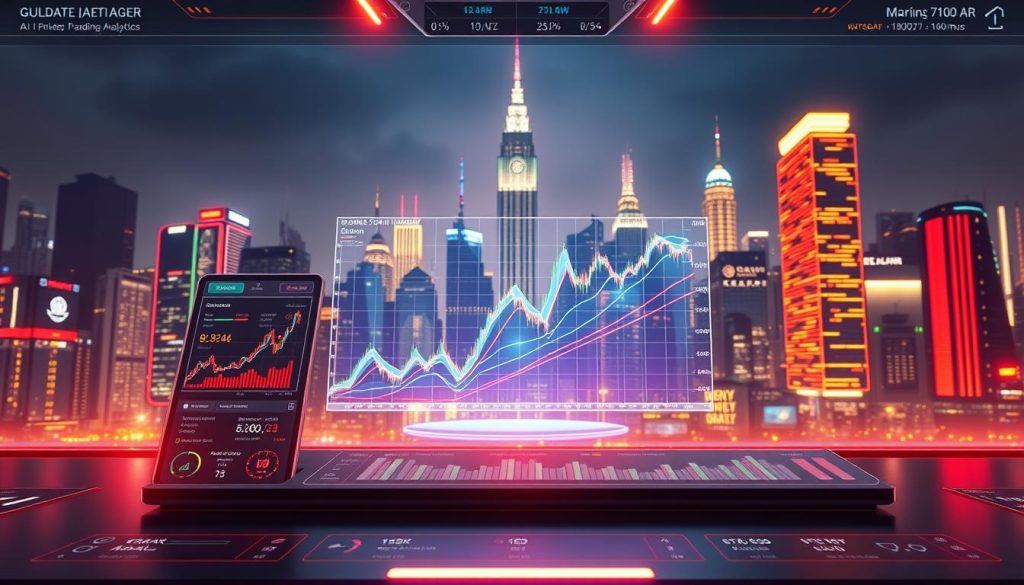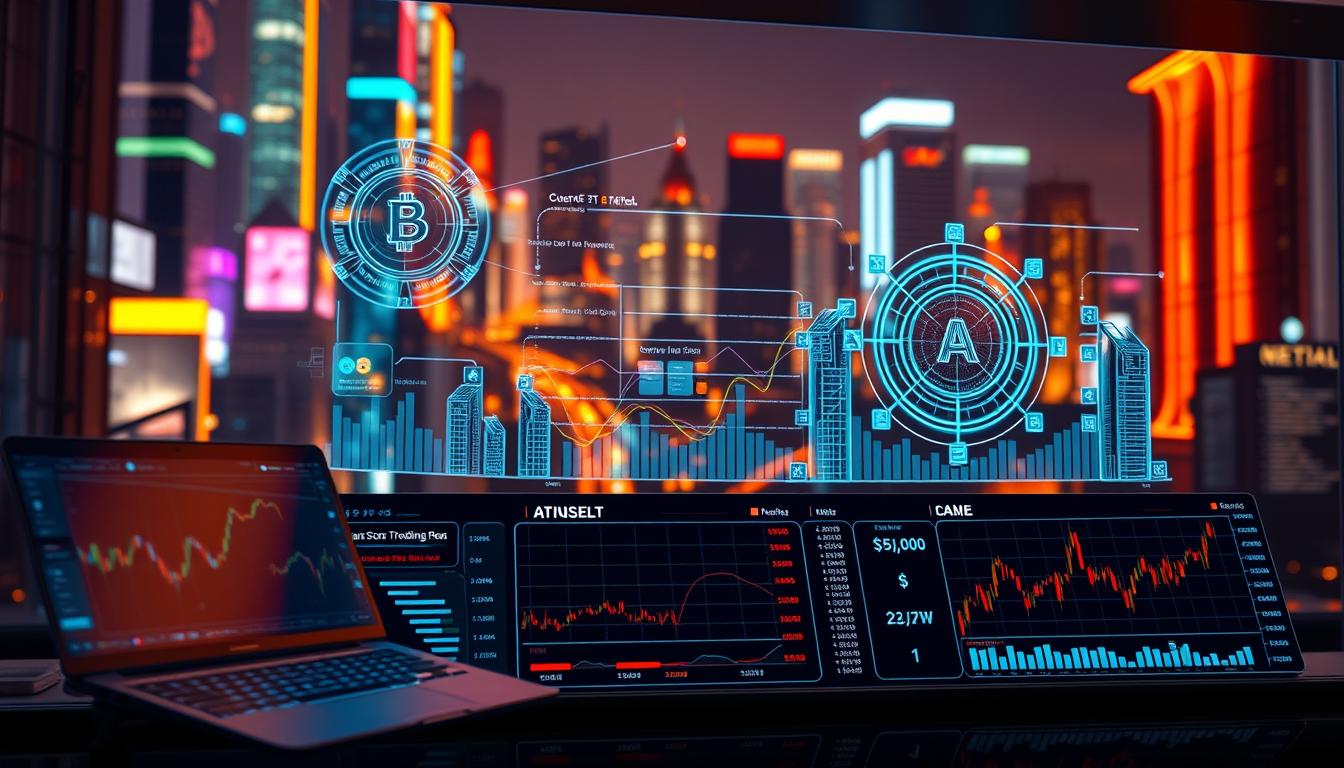Unlocking Profits or Unleashing Risks? The Untold Story of 2025’s AI-Driven Crypto Tools
Did you know that over 80% of traders struggle to maintain consistent profits in the volatile crypto market? The key to success lies in leveraging cutting-edge tools that simplify decision-making and enhance accuracy. As we look ahead to 2025, the integration of advanced technologies is set to revolutionize how we approach crypto investments.
HeliumBlueMoon.com, a leading IoT crypto news platform, is at the forefront of this transformation. Their expert insights and in-depth analysis provide traders with the knowledge needed to stay ahead. By utilizing high-accuracy indicators, you can refine your strategies and minimize errors, ensuring better outcomes in every trade.
These tools are designed to integrate seamlessly with market analysis, offering real-time updates and predictive capabilities. Whether you’re a seasoned trader or just starting, access to such innovations can make all the difference. The future of crypto trading is here, and it’s time to embrace it.
Key Takeaways
- Advanced tools are essential for consistent crypto profits.
- Technological advancements will shape trading in 2025 and beyond.
- HeliumBlueMoon.com offers expert insights for informed decisions.
- High-accuracy indicators improve performance and reduce errors.
- Real-time updates and predictive capabilities enhance trading strategies.
Introduction to AI Trading Signals
Modern markets demand smarter strategies to navigate their complexities. One of the most effective tools available today is the use of advanced indicators that provide actionable insights. These tools are designed to help users make informed decisions in real-time, especially in volatile environments like crypto and IoT markets.
What Are AI Trading Signals?
AI trading signals are data-driven insights generated by sophisticated algorithms. They analyze vast amounts of information, including historical trends and real-time market conditions, to predict future movements. These signals help users identify optimal entry and exit points, reducing the risk of errors.
For example, a 2019 survey by Greenwich Associates found that liquidity-seeking algorithms were the most popular among traders. These tools aim to minimize slippage and optimize execution, ensuring better outcomes for every trade.
Why They Matter in Today’s Crypto and IoT Markets
In fast-moving markets, timing is everything. Signals provide real-time updates, allowing users to act swiftly. They also play a crucial role in optimizing benchmarks like Volume-Weighted Average Price (VWAP). By slicing large orders into smaller ones, these tools ensure minimal impact on price.
Industry research shows that 66% of traded volume in US equities occurs in the 50 milliseconds before a price change. This highlights the importance of having access to predictive tools that can anticipate such shifts.
| Benefit | Description |
|---|---|
| Reduced Slippage | Minimizes the difference between expected and execution prices. |
| Optimized Execution | Ensures trades align with benchmarks like VWAP. |
| Real-Time Insights | Provides actionable data for timely decisions. |
By incorporating these signals into their strategies, traders and automated systems can enhance their performance. Whether you’re managing a portfolio or executing high-frequency trades, these tools offer a significant advantage.
Exploring 2025 AI Trading Bots & High-Accuracy Indicators
The future of crypto tools is evolving rapidly, offering unprecedented precision. As we approach 2025, next-generation bots and indicators are setting new benchmarks for accuracy and efficiency. These innovations are designed to simplify decision-making while enhancing performance in volatile markets.
Key Features and Innovations
State-of-the-art bots are equipped with advanced algorithms that process vast amounts of data in real-time. They combine historical trends with current market conditions to forecast price movements and liquidity. This ensures users can make informed decisions with confidence.
For instance, platforms like TradingView integrate seamlessly with these tools, providing a unified system for technical analysis. Users gain access to predictive capabilities that minimize slippage and optimize execution. These features are particularly valuable in high-frequency environments.
Integrating Bots with Market Analysis
Integration with comprehensive market analysis software is a game-changer. These bots bridge the gap between technical indicators and algorithmic strategies, offering a holistic approach to trading. Case studies show improved fill rates and reduced implementation shortfall, highlighting their effectiveness.
For example, HeliumBlueMoon.com emphasizes the importance of combining these tools with expert insights. This approach not only enhances accuracy but also empowers users to stay ahead in the ever-changing crypto landscape.
- Advanced algorithms for real-time data processing.
- Seamless integration with platforms like TradingView.
- Improved fill rates and minimized slippage.
- Unified system for technical and algorithmic strategies.
- Expert insights for informed decision-making.
Enhancing Execution Strategies with Predictive Signals
Execution strategies in dynamic markets require precision and adaptability. Predictive insights are revolutionizing how traders approach challenges like slippage and order slicing. By integrating advanced tools, users can optimize their strategies and achieve better outcomes.
Reducing Slippage and Order Slicing Challenges
Slippage occurs when the execution price differs from the expected price, often due to market volatility. Order slicing, the process of breaking large orders into smaller ones, can help minimize this issue. However, timing is critical. Predictive signals analyze real-time data to identify optimal moments for execution, reducing slippage significantly.
For example, JPMorgan Chase’s LOXM tool uses machine learning to optimize equity trade execution. This approach has reduced trading costs by 10%, showcasing the power of predictive insights in addressing execution challenges.
Optimizing VWAP and TWAP Through AI Insights
Volume-Weighted Average Price (VWAP) and Time-Weighted Average Price (TWAP) are popular benchmarks for execution strategies. Predictive signals enhance these strategies by analyzing historical trends and current market conditions. This ensures trades align with benchmarks while minimizing price impact.
Bridgewater Associates achieved a 7% increase in annual returns by integrating predictive tools into their strategies. These tools not only improve fill rates but also refine fragmented execution approaches in dynamic market conditions.
- Predictive signals reduce slippage by timing order placements accurately.
- Advanced tools optimize VWAP and TWAP strategies for better outcomes.
- Real-world examples show significant improvements in fill rates and cost reductions.
- Integrating insights into execution strategies enhances overall performance.
Optimizing Trading Strategies and Market Analysis
In today’s fast-paced markets, real-time data and algorithmic metrics are reshaping how traders approach their strategies. These tools provide actionable insights, enabling both novice and experienced traders to make informed decisions. By leveraging these resources, users can enhance their analysis and execution, ensuring better outcomes in every trade.
Utilizing Real-Time Data and Algorithmic Metrics
Real-time data is the backbone of modern trading strategies. It allows traders to respond swiftly to market changes, minimizing risks and maximizing opportunities. Algorithmic metrics, such as slippage and volume execution, further refine these strategies by providing precise price benchmarks.
For instance, tools that analyze historical trends alongside current market conditions can predict future movements with high accuracy. This combination of data and metrics ensures that traders can adjust their approaches dynamically, staying ahead in volatile environments.
Key performance indicators (KPIs) play a crucial role in this process. Metrics like Volume-Weighted Average Price (VWAP) help traders align their executions with market conditions, reducing price impact and improving fill rates. These insights are invaluable for optimizing strategies and achieving consistent profits.
- Real-time data enables swift responses to market changes.
- Algorithmic metrics refine strategies by providing precise benchmarks.
- KPIs like VWAP improve execution and reduce price impact.
- Dynamic adjustments enhance performance in volatile markets.
By integrating these tools into their strategies, traders can synthesize market data effectively. This not only enhances decision-making but also provides a pathway to consistently profitable trades. The future of trading lies in the seamless use of real-time data and algorithmic metrics, empowering users to navigate the complexities of the market with confidence.
Leveraging AI-Powered Trading Tools for Consistent Profits
Achieving consistent profits in volatile markets requires tools that adapt quickly and efficiently. Advanced solutions are designed to simplify decision-making while enhancing accuracy. By integrating these tools into your strategy, you can stay ahead in the ever-changing market landscape.
Seamless Integration with TradingView and Broker Platforms
One of the standout features of modern tools is their ability to integrate seamlessly with platforms like TradingView. This integration allows users to access real-time data and predictive insights without switching between applications. The process is straightforward, ensuring even beginners can deploy these tools quickly.
Broker compatibility is another key advantage. These tools connect effortlessly with various broker platforms, enabling instant execution of trades. This reduces reaction times and ensures you never miss an opportunity. Whether you’re analyzing price movements or executing a trading signal, the process is streamlined for efficiency.
- Rapid deployment across platforms like TradingView.
- Easy connection with broker platforms for real-time execution.
- Predictive capabilities that anticipate market shifts.
- Case studies show reduced manual errors and enhanced profitability.
- Technical insights ensure consistency and precision in every trade.
By leveraging these integrated solutions, you can refine your strategy and achieve better outcomes. The combination of real-time data and predictive analysis empowers you to make informed decisions, even in the most volatile conditions.
AI Trading Signals: Revolutionizing Trade Execution
The integration of advanced tools is reshaping how trades are executed, offering unprecedented efficiency. Predictive signals are at the forefront of this transformation, enhancing the way both institutional and retail traders approach the market. These tools provide actionable insights, ensuring better outcomes in every trade.

How Predictive Signals Enhance Algorithmic Trading
Predictive signals are revolutionizing algorithmic systems by offering real-time datum and precise forecasts. These tools analyze vast amounts of information, including historical trends and current market conditions, to predict future movements. This ensures traders can make informed decisions with confidence.
For example, platforms like Trade Ideas utilize algorithms to analyze market data and generate real-time signals. This improves decision-making speed and reduces the risk of errors. The result is lower price impact and better liquidity management.
- Predictive signals reduce slippage by timing order placements accurately.
- Enhanced precision leads to improved execution rates and reduced costs.
- Real-world examples show significant benefits for both retail and institutional traders.
- These innovations are changing the landscape of trading, offering a competitive edge.
By leveraging these tools, traders can refine their strategy and achieve consistent profits. The future of trading lies in the seamless integration of predictive signals, empowering users to navigate the complexities of the market with confidence.
For more insights on how these tools are transforming the industry, visit this detailed analysis.
Future Trends in IoT and Crypto Trading
The landscape of crypto and IoT trading is rapidly evolving, driven by groundbreaking innovations. As decentralized technologies gain traction, the way we approach investment and asset management is transforming. Staying ahead requires understanding emerging trends and preparing for the future of these dynamic markets.
Evolving Technologies and Execution Algorithms
New technologies are reshaping the trading ecosystem. Advanced execution algorithms now integrate predictive capabilities, offering real-time insights into market movements. These tools analyze vast datasets, enabling traders to anticipate shifts and optimize strategies.
For instance, emerging order types and matching engines are enhancing liquidity and reducing price impact. Platforms like Ethereum and Solana are leading the charge, providing robust support for decentralized applications. This evolution ensures faster, more efficient trades, even in volatile conditions.
Preparing for Tomorrow’s Market Shifts
As the market landscape changes, traders must adapt to stay competitive. One key strategy is leveraging decentralized tools that offer greater transparency and security. These innovations not only improve execution but also minimize risks associated with traditional systems.
Another critical step is embracing automation. Tools that integrate seamlessly with platforms like TradingView allow users to execute trades with precision. By staying informed and adopting these advancements, traders can navigate the future with confidence.
- Emerging technologies are enhancing execution algorithms for better insights.
- Decentralized platforms offer greater transparency and security in trading.
- Automation tools streamline strategies, reducing manual errors.
- Staying informed ensures readiness for upcoming market shifts.
Conclusion
The crypto market’s volatility demands tools that enhance precision and consistency. Advanced algorithms and predictive insights have proven essential for improving trading performance. By integrating real-time datum and high-accuracy indicators, traders can minimize risks and maximize profitability.
These tools streamline execution, ensuring better alignment with market conditions. Whether you’re managing a portfolio or executing high-frequency trades, their value is undeniable. For deeper insight and expert guidance, explore this detailed analysis.
As the market evolves, adopting these innovations becomes crucial. They empower users to navigate complexities with confidence, making them indispensable for future success. Embrace these advancements to refine your trading strategy and achieve consistent results.
FAQ
What are AI trading signals?
AI trading signals are data-driven insights generated by advanced algorithms to help traders make informed decisions. These signals analyze market trends, price movements, and other metrics to predict future outcomes.
Why are AI trading signals important in today’s markets?
In fast-paced markets like crypto and IoT, AI trading signals provide real-time analysis and predictive insights, enabling traders to act swiftly and reduce risks. They help optimize strategies and improve decision-making accuracy.
What features should I look for in 2025 AI trading bots?
Key features include high-accuracy indicators, seamless integration with platforms like TradingView, real-time data analysis, and advanced execution algorithms. These tools enhance efficiency and profitability.
How do AI trading bots integrate with market analysis?
AI bots use algorithmic metrics to process vast amounts of data, identifying patterns and trends. This integration allows for precise market predictions and optimized trading strategies.
How do predictive signals reduce slippage and order slicing?
Predictive signals analyze market conditions to time trades effectively, minimizing delays and price discrepancies. This reduces slippage and ensures smoother order execution.
Can AI insights optimize VWAP and TWAP strategies?
Yes, AI insights enhance Volume Weighted Average Price (VWAP) and Time Weighted Average Price (TWAP) strategies by providing accurate timing and execution recommendations.
How do real-time data and algorithmic metrics improve trading?
Real-time data ensures traders have the latest market information, while algorithmic metrics process this data to identify opportunities and risks, leading to more informed decisions.
How do AI-powered tools integrate with TradingView and broker platforms?
AI tools seamlessly connect with platforms like TradingView and broker systems, allowing traders to access signals, execute trades, and monitor performance all in one place.
How do predictive signals enhance algorithmic trading?
Predictive signals provide actionable insights that improve the accuracy and efficiency of algorithmic trading. They help identify optimal entry and exit points, maximizing returns.
What future trends should traders prepare for in IoT and crypto markets?
Traders should expect advancements in execution algorithms, increased automation, and evolving technologies. Staying informed and adaptable will be key to navigating future market shifts.

